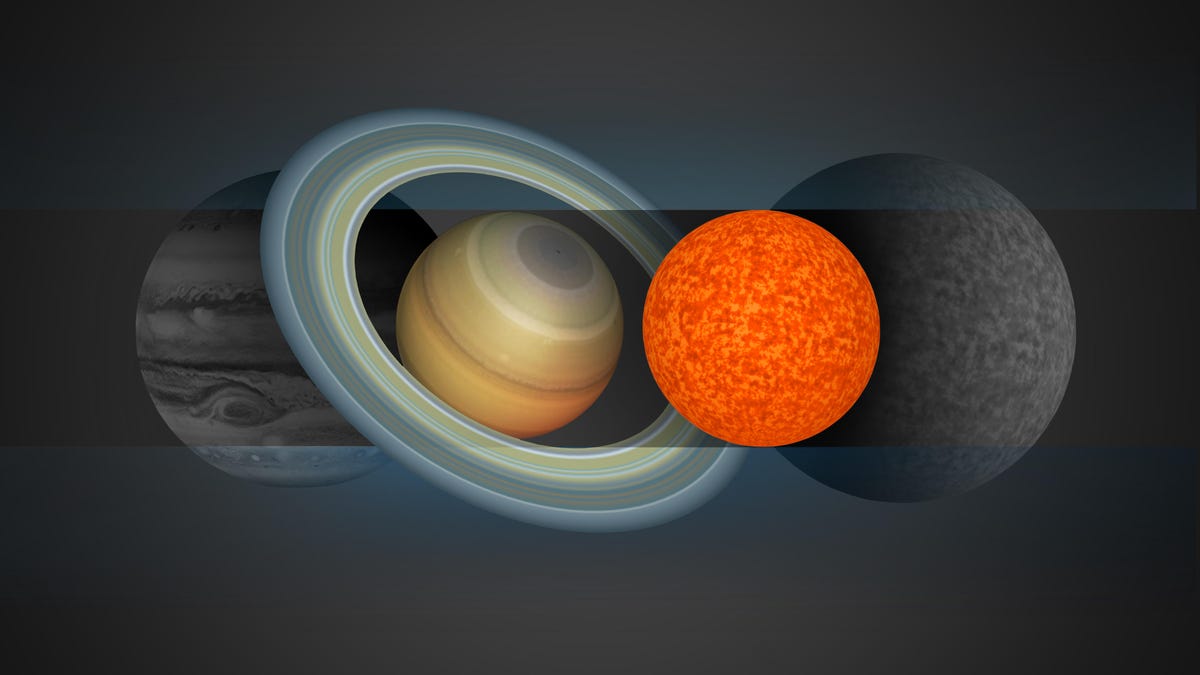Saturn-sized star is the smallest ever discovered
Astronomers like to hunt for Earth's cousins around dwarf stars, and now they've found one they think could be the smallest possible sun.

Size comparison of Saturn and EBLM J0555-57Ab.
When it comes to searching for other Earth-like planets that might be able to support life, scientists spend lots of time checking stars that are smaller than our sun.
No one has found E.T.'s home just yet, but on Tuesday the search yielded another fascinating find: the smallest star ever discovered. The star known as EBLM J0555-57Ab is about 600 light years away from us and is just a little bit bigger than Saturn.
"Our discovery reveals how small stars can be," said Cambridge master's student Alexander von Boetticher in a release. "Had this star formed with only a slightly lower mass, the fusion reaction of hydrogen in its core could not be sustained, and the star would instead have transformed into a brown dwarf."
Von Boetticher is lead author of a paper on the discovery published Tuesday in the journal Astronomy & Astrophysics.
EBLM J0555-57Ab has a comparable mass to Trappist-1, the ultracool dwarf star that was found earlier this year to be circled by at least seven Earth-sized planets. Such small stars are the most plentiful type in the universe and are ideal targets to search for Earth-like planets, the researchers say.
The newly discovered star's radius is about 30 percent smaller than that of Trappist-1. In fact, the star is so small that it isn't putting out much heat.
"This star is smaller, and likely colder, than many of the gas giant exoplanets that have so far been identified," said von Boetticher.
Astronomers were able to detect the tiny, dim star because it's part of a binary star system. It was found the same way many exoplanets are found, by observing when they pass in front of their host stars and make them dim just slightly -- but in this case it was a tiny star passing in front of a larger, brighter one.
"Thankfully, we can find these small stars with planet-hunting equipment, when they orbit a larger host star in a binary system. It might sound incredible, but finding a star can at times be harder than finding a planet," explained von Boetticher.
Crowd Control: A crowdsourced science fiction novel written by CNET readers.
Solving for XX: The tech industry seeks to overcome outdated ideas about "women in tech."

